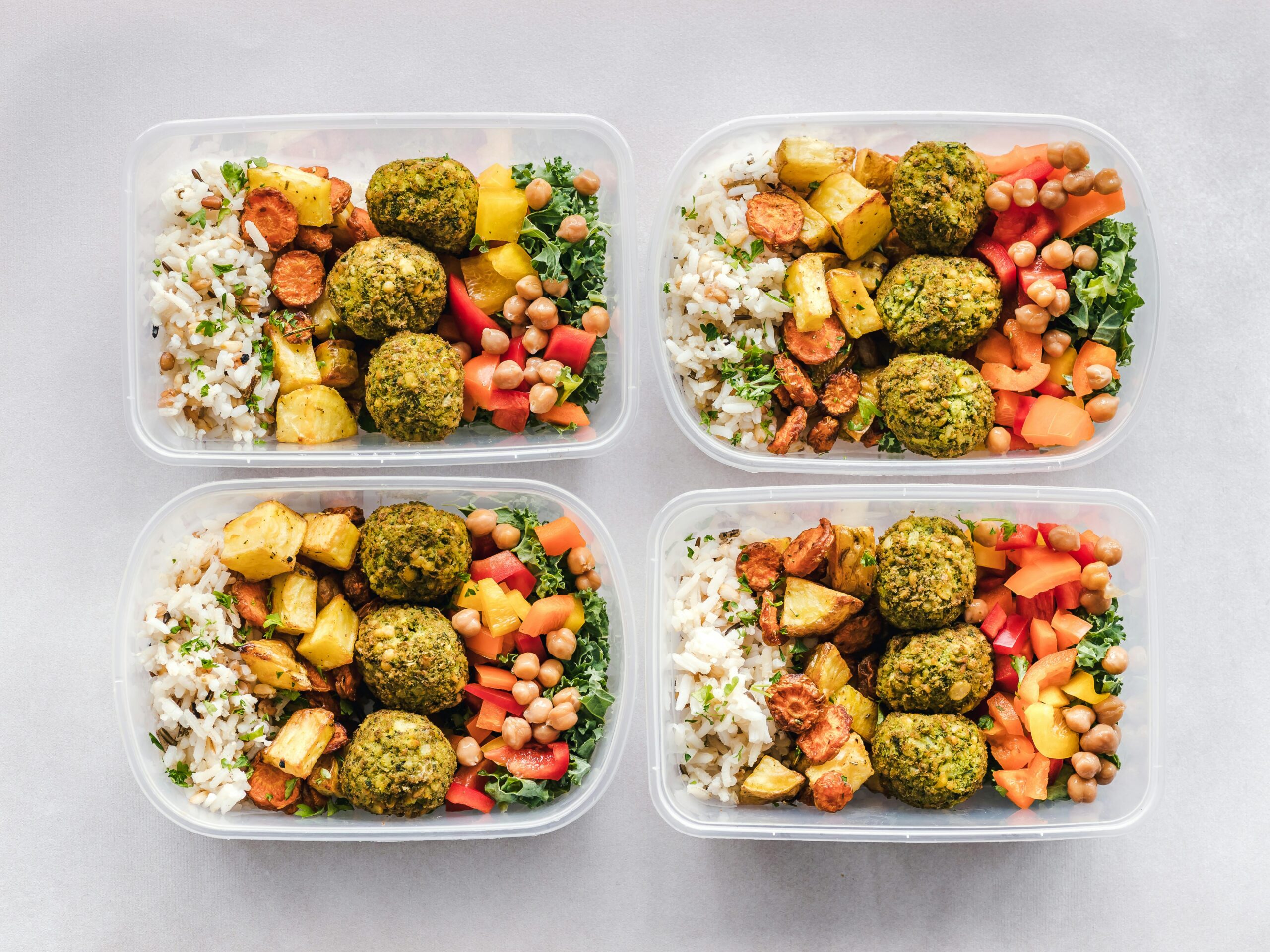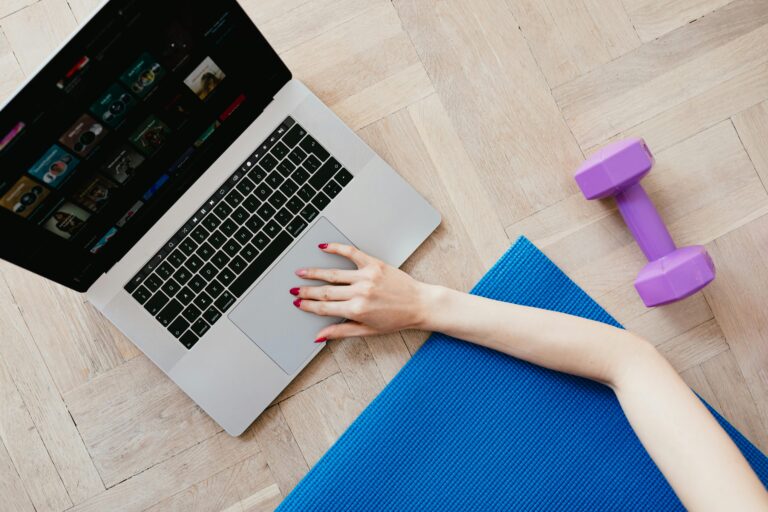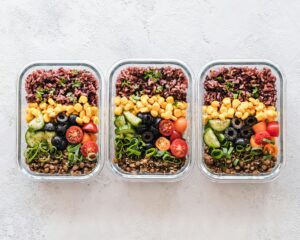Learn how to meal prep for the entire week with easy steps, storage tips, and meal ideas. Save time, eat healthier, and reduce food waste with this ultimate guide to weekly meal prep.
Why Meal Prep Matters?
We live in a busy world. Between work, school, family, and personal commitments, finding time to cook healthy meals every day can feel impossible. This is where meal prep comes to the rescue.
Meal prep (short for meal preparation) means planning, cooking, and storing your meals in advance. Instead of stressing over “what should I eat today?” you’ll have ready-to-go meals waiting for you in the fridge.
The benefits are huge:
- Saves time – Cook once, eat multiple times.
- Healthier eating – Pre-portioned meals help control calories.
- Saves money – Reduces eating out and food waste.
- Less stress – No daily cooking chaos.
This guide will show you step by step how to meal prep for the entire week like a pro.
Step 1: Plan Your Meals
Before you cook anything, planning is key. Ask yourself:
- How many meals do I need? (Breakfast, lunch, dinner, snacks)
- Do I want variety or do I prefer eating the same meals daily?
- Do I have access to a microwave/fridge at work or school?
Tips for Planning:
- Pick simple meals: Stick to 3–5 recipes that are easy to cook in bulk.
- Balance your plate: Include carbs, protein, fats, and veggies.
- Consider your goals:
- Weight loss → lower calories, high protein, more veggies.
- Muscle gain → higher calories, balanced carbs + protein.
- General health → balanced variety.
Example weekly plan (lunch/dinner):
- 2 days: Brown rice + chickpea curry + salad
- 2 days: Grilled chicken + sweet potato + broccoli
- 3 days: Quinoa + paneer + stir-fry veggies
Step 2: Make a Grocery List
Once you’ve chosen meals, create a detailed grocery list. This prevents impulse buying and saves money.
Pro Tip: Group your list into categories:
- Proteins: Chicken, paneer, tofu, lentils, beans, eggs.
- Carbs: Brown rice, oats, sweet potatoes, quinoa, whole wheat roti.
- Veggies: Spinach, broccoli, carrots, cucumbers, bell peppers.
- Fruits: Apples, bananas, berries.
- Fats: Olive oil, nuts, avocado, seeds.
Step 3: Choose the Right Containers
Storage matters as much as cooking. Invest in:
- Glass containers: Best for reheating in microwave/oven.
- BPA-free plastic containers: Lightweight for carrying.
- Mason jars: Perfect for overnight oats, salads, smoothies.
- Freezer bags: Great for storing pre-cut vegetables.
Pro Tip: Use portion-sized containers to avoid overeating.
Step 4: Cook in Batches
Set aside 2–3 hours once a week (usually Sunday) to cook your meals.
How to Cook Efficiently:
- Cook grains (rice, quinoa, oats) in one go.
- Prepare protein (chicken, lentils, paneer) in large portions.
- Roast a tray of vegetables (broccoli, carrots, sweet potatoes).
- Chop salad veggies and store separately.
- Make healthy sauces/dressings in advance.
This way, you mix and match during the week without getting bored.
Step 5: Store Meals Properly
Storing food correctly ensures freshness and safety.
Refrigeration Rules:
- Cooked meals last 3–4 days in the fridge.
- Store separately: grains, proteins, veggies.
- Salads stay fresh if you keep dressing separate.
Freezing Rules:
- Meals can last up to 2–3 months in the freezer.
- Best frozen foods: rice, cooked beans, lentils, chicken, soups.
- Avoid freezing: lettuce, cucumbers, yogurt (they lose texture).
Pro Tip: Label containers with date + meal name.
Step 6: Reheat and Eat
When it’s time to eat, just reheat and enjoy.
- Microwave: 2–3 minutes.
- Stove: Heat in a nonstick pan.
- Oven: Reheat roasted veggies or casseroles.
7-Day Meal Prep Example (Indian Vegetarian)
Here’s a sample weekly plan for 1 person:
Breakfast (Prep Overnight)
- Overnight oats with chia seeds + fruit.
- Vegetable upma or poha (make fresh but prep chopped veggies).
- Paneer bhurji with whole wheat toast.
Lunch & Dinner
- Day 1-2: Brown rice + dal + cucumber salad.
- Day 3-4: Quinoa + rajma (kidney beans) curry + stir-fry veggies.
- Day 5-6: Roti + chana masala + spinach sabzi.
- Day 7: Millet khichdi + vegetable raita.
Snacks
- Roasted chana.
- Sprouts salad.
- Fruit + nuts.
Tips for Successful Meal Prep
- Start small: Begin with prepping 2–3 days, then extend to a full week.
- Mix flavors: Use spices, herbs, and sauces to avoid boredom.
- Stay flexible: It’s okay to swap meals if cravings change.
- Batch cook proteins: You can repurpose them (grilled chicken → wraps, salads, curries).
- Don’t overcomplicate: Stick to easy recipes at first.
Common Mistakes to Avoid
Making too much food and letting it go to waste.
Prepping only boring, plain meals (leads to cravings).
Not labeling containers → forgetting what’s inside.
Skipping variety (you’ll get tired quickly).
Ignoring portion control (meal prep can still make you overeat).
Benefits of Weekly Meal Prep
Saves 5–10 hours per week.
Helps you stick to fitness and weight goals.
Reduces food waste by up to 30%.
Keeps you consistent with healthy eating.
Saves money – fewer takeouts and restaurant meals.
FAQs on Meal Prep
Q1: How many days in advance should I meal prep?
Usually 3–4 days for fridge storage. For a full week, freeze half the meals.
Q2: Can meal prep help with weight loss?
Yes! Pre-portioned meals prevent overeating and help maintain a calorie deficit.
Q3: Do I need to eat the same meals every day?
Not at all. Batch-cook base ingredients (rice, lentils, veggies) and mix them in different ways.
Q4: What are the best foods for meal prep?
Rice, oats, chicken, paneer, lentils, roasted vegetables, salads (without dressing).
Q5: How do I stop meals from getting soggy?
Keep wet and dry ingredients separate (e.g., salads + dressing stored apart).
Meal prepping is not about eating boring food or living out of containers. It’s about saving time, eating healthier, and building consistency. Whether your goal is weight loss, muscle gain, or simply reducing stress, meal prep can change your lifestyle for the better.
Start small. Prep just two meals per day for 3 days. Once you get comfortable, expand to a full week. Experiment with different recipes, keep your fridge stocked with staples, and soon meal prepping will feel like second nature.
Remember, the key to success is not perfection – it’s consistency. A little effort once a week can save you hours and keep you healthy for years to come.










